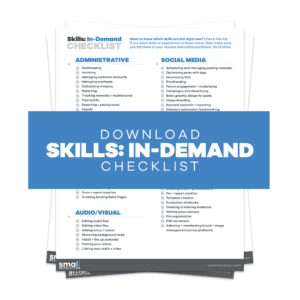Can I succeed in telemarketing if I work from home? With all the noise, distractions from my children, loud music from my neighbor’s stereo.
Sounds tricky, right? Well, you can succeed. If you have the right skills and experience while cultivating the best habits in your work.
Telemarketing has been and will remain one of the leading marketing avenues. With ever-growing competition in most sectors, companies are continually relying on telemarketers to explore new markets – even those who work from home.
Home telemarketing jobs are still a rewarding career whether you choose to go full-time or part-time. It also doesn’t require a lot of work experience. However, the right skills separate the amateurs from the gurus.
You should therefore adopt these habits if you hope to succeed, particularly if you choose to work from home.

1. Planning Before the Call
Success in home telemarketing work begins way before you start making calls.
In today’s fast-paced world, people don’t have all the time to listen to you elaborate on products. If you haven’t impressed them in the first 10-20 seconds, you’ve already lost them.
So ease your job by spending time preparing to ace that call before you even pick up the dialer. Here are some of the preparatory steps you should take in telemarketing work from home:
a) Gather Data About Your Prospects
Proper targeting and profiling of your prospects, especially in direct sales, significantly increase your chances of conversion.
Case in point: McDonald’s successfully captured 18.5% of the United States fast-food market share in 2020 through targeted advertising.
Having a lengthy list of prospects you want to engage in your telemarketing work is not enough. You must narrow down your list with laser-sharp focus on the key attributes that describe your prospects.
Consider their age, location, gender, and product preference. For instance, you wouldn’t want to spend the whole day trying to telemarket tablets to elderly women in a nursing home. They’re likely already covered on that front.
If you have a generic list of prospects to engage, first stratify them into different clusters based on the products most likely to interest them. Then refine it further to the most probable converts and start by calling them.
b) Develop an Understanding of the Products You Are Selling
Nothing is more aggravating than listening to a telemarketer fumble around without a clear understanding of what they’re trying to sell you. To successfully convert, it’s your job to make prospects feel that your product is the solution to all their problems.
Find out your products’ key selling points and exemplify that in your sales pitch. Is it pricing, packaging, longevity, or quality? Make the prospects fall in love with your product and the promised experience.

c) Rehearse Your Calls and Assess Their Effectiveness From the Prospect’s Viewpoint
Like an interview for a well-paying job, you want to go into your telemarketing work from home confident and prepared. Rehearsing your calls enables you to pick out gaps and weaknesses while building on your work experience.
Practicing provides a zero pressure environment to try out your craft. Find a convenient spot at home and listen to yourself make a dummy call. In reviewing your call, consider the following questions:
- Would you buy the product if you were on the other end of the call?
- Is your voice audible?
- Are you speaking too fast?
- Do you need to improve your communication skills?
Keep rehearsing until you feel confident enough to make a real call.

d) Choose a Quiet and Convenient Place to Make the Calls
Home telemarketing can be very tricky. With distractions coming from all directions, you need to be in the best frame of mind to convince your prospects.
Before you get to the business of calling, make sure you are seated in a quiet place at home that allows maximum concentration – whether you are working full-time or part-time.
Nobody wants to struggle to pick out what you just said over children screaming in the background.
You want to sound professional; to do so, let your prospect imagine you are calling them from a corner office in the middle of Wall Street.
Your call should not suggest that you work from home. Get away from anything that can spoil this.
Get a nanny to babysit your children as you work from home. Eliminate any distraction that may spoil your telemarketing experience.
Additionally, prepare a comfortable and convenient workspace. Working professionally, especially when you decide to work from home, requires the right frame of mind.
To achieve this, you will need to create a professional workspace with a desk, a comfortable chair, and a stable internet connection in your home. Your workspace should become your work from home call centre.

2. During the Call
The second thing to consider in telemarketing work from home is your attitude during the actual call. Observe the following habits during the call:
a) Be Kind and Friendly
The rule of thumb in marketing is that prospects buy the experience and emotions – not just the product or service. The service experience your prospect gets when they pick up your call will, to a large extent, determine whether they will buy your service.
Make sure to use kind and polite language. Warm-up to the prospect and have them excited about picking your call. You may want to find out how their day has been.
At the end of the day, you want to give them the best customer service and hopefully, make some sales.
Make sure that the prospect’s experience describes a telemarketer who is good at their job.

b) Capture Your Prospect’s Attention
As mentioned, cold-called prospects are very impatient. They view your call as a nuisance and distraction from their job.
Therefore, you should immediately focus on being interesting. Make your prospects feel, I want to hear more.
You can start by identifying and empathizing with their pain points. Let them feel you are concerned about what they’re going through. Don’t just rush into making the sales.
c) Get to the Point
As much as you should warm up to your cold prospect, don’t spend too long there. Some prospects prefer straight to the point communication.
Especially if you are making B2B sales to senior executives in the United States, recognize that their job demands a lot – you won’t get much time from them. Most of them are looking for a quick fix to their problem, and if you can mention that, you are guaranteed to make some sales.
d) Define a Concrete Next Step (Place an Order, Call Back, or Visit Date)
NEVER LEAVE YOUR SALES CALL HANGING! The very reason you made the call was to try and make sales. Prospects will always want to delay their sales decision for as long as possible.
Getting the prospect to commit to a particular action, such as placing an order or hosting a visit on a certain date, moves them up the sales pipeline.
Whenever you leave your calls hanging, you risk your job by giving them an opportunity to look through what your competitors are doing. You wouldn’t want to go through the work of sourcing for the client, only to have them converted by your competitors.
e) Document the Status and Next Steps After Each Call
The last stage in your telemarketing work from home is documenting the status and next steps after every call. This can be done on a Google sheet or whichever CRM your employer uses.
Documenting allows your employer to assess your customer service and effectiveness on the job.
In order to build your telemarketing experience, take a course in customer service from Small Revolution. They have a wide variety of courses that will prepare you for call centre work and home telemarketing jobs.
If you are seriously considering a work from home option as a telemarketer, now is the time to pick up a course or two at Small Revolution.
Photo by pressfoto / CC BY


